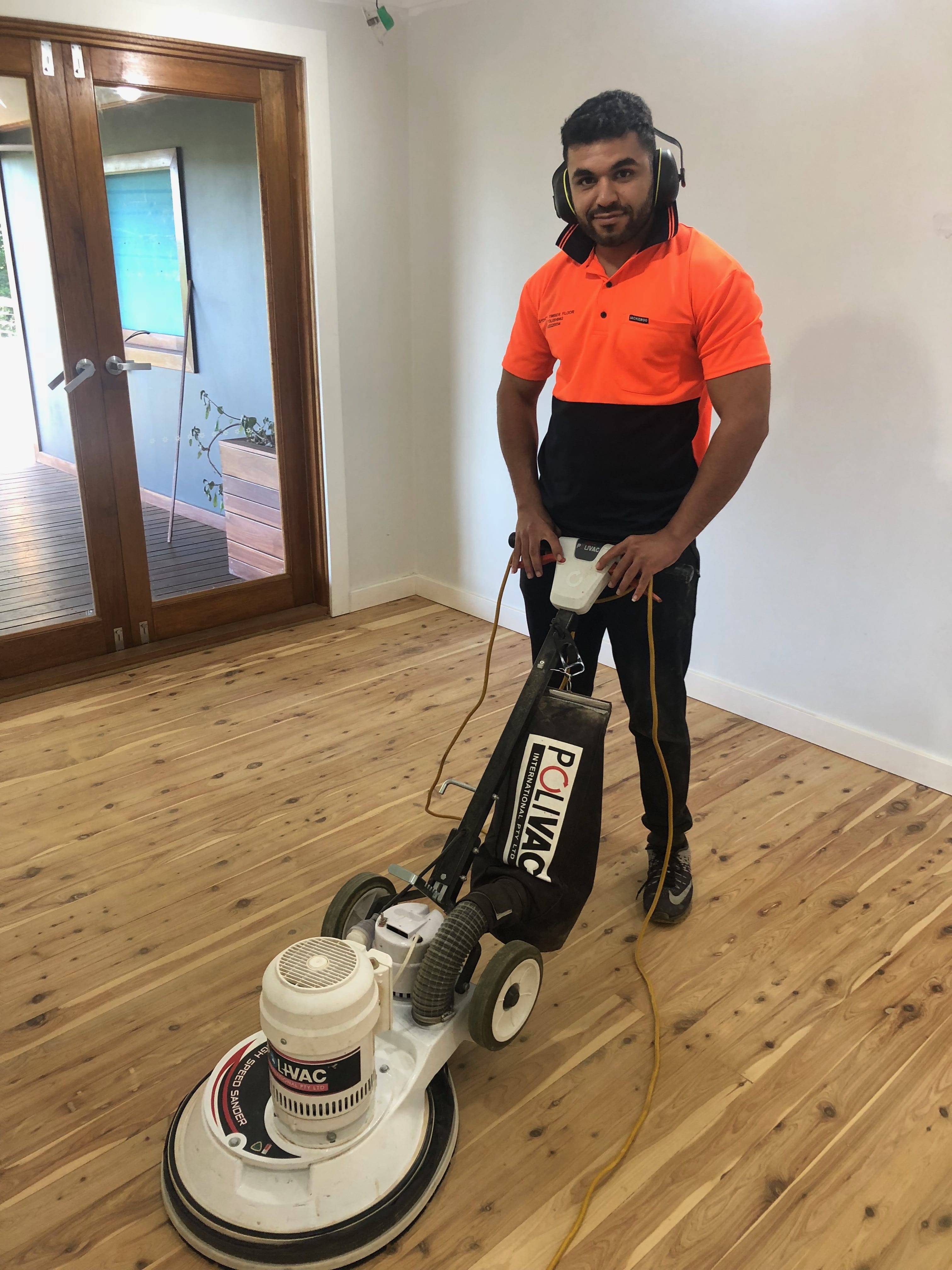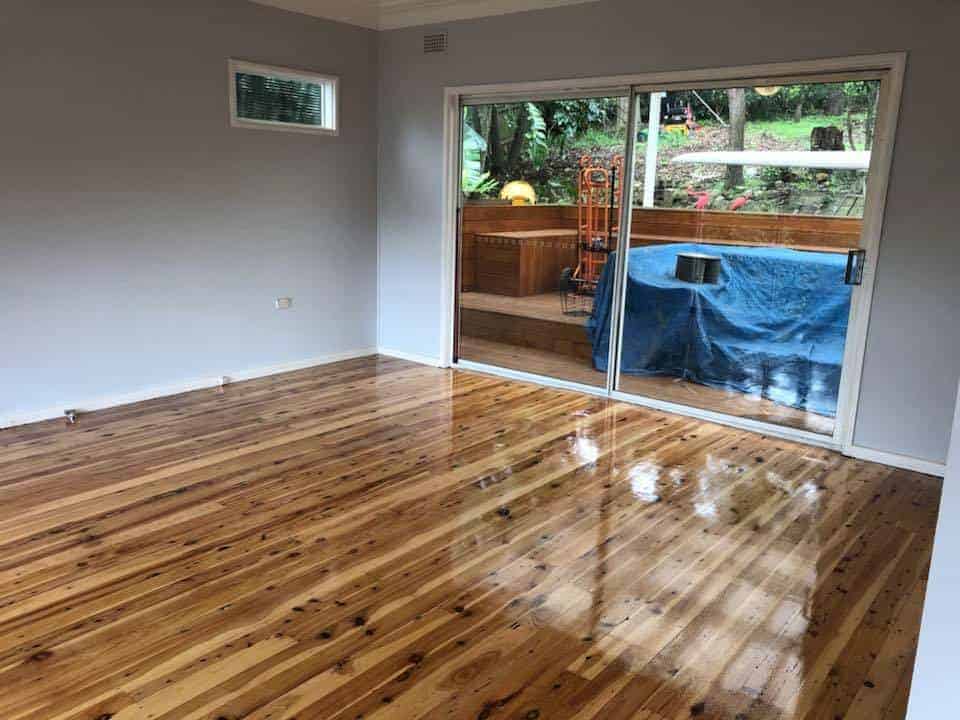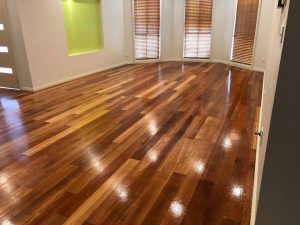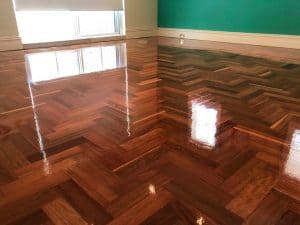Timber floors that are newly laid need to have nails punched through them. Afterwards, coloured putty is used to plug these holes. Given that edging equipment sands right up to walls, we recommend not installing skirting boards.
In the case of existing timber floors, we remove or punch down adhesives, old nails, carpet underlay and staples, making repairs or replacements of boards as required.
Sanding does not commence until preparation is complete, and the first cut is typically done with coarse-grit sandpaper to flatten out the floor.
Whether you are renovating, decorating or building, it is important to schedule your timber floor sanding after all the building work (such as plumbing, glazing, electrical, plastering and carpentry) is completed.
It is essential that power is accessible and all floor coverings and furniture have been removed. Curtains and light fittings may be covered up with either plastic bags, paper, or be temporarily removed as well. As sanding is intrinsically a messy process, rooms must be sealed so that dust particles are contained only within the finished areas. That means that open doors or windows, air vents and fireplaces need to be sealed using masking tape and paper.
Quite oddly, polyurethane seems to attract ants, so to prevent ants from crawling across newly finished floors and spoiling them, we recommend carrying out a pest treatment prior to the commencement of floor sanding.
Given that some finishes with toxic based coatings need time to harden and also give off powerful fumes for several days before you can safely breathe in the space and furniture may be reinstated, you will need to seek alternative accommodation during this time. Also keep in mind that wet floor areas should not be walked upon.
Specialised machines are used to sand timber flooring. Typically, either so-called drum sanders or large belts are used, along with an ‘edger’ for difficult-to-reach sections such as stairs and corners. Using these, our trained operators will prepare the floor properly. The timber floors are sanded, then thoroughly vacuumed, removing all remnants of dust particles so they can then be quickly sealed—before any further dust contamination has a chance to enter from other parts of the house and settle upon the newly applied finish.
Depending on the kind of finish you would like, the floors could then be stained, with a minimum application of two finish coats. This is subsequently left for several days to harden. There is a huge selection of different finishes and stains available to choose from for the flooring: select either water-based, solvent-based or oil-based.
Once your floors are sanded, deciding on the correct finish is important and we can give you recommendations about this, taking into account colour, traffic conditions, gloss and other considerations for your particular flooring. To obtain further information regarding finishes and stains for either your deck or internal timber floors, please visit this page.



